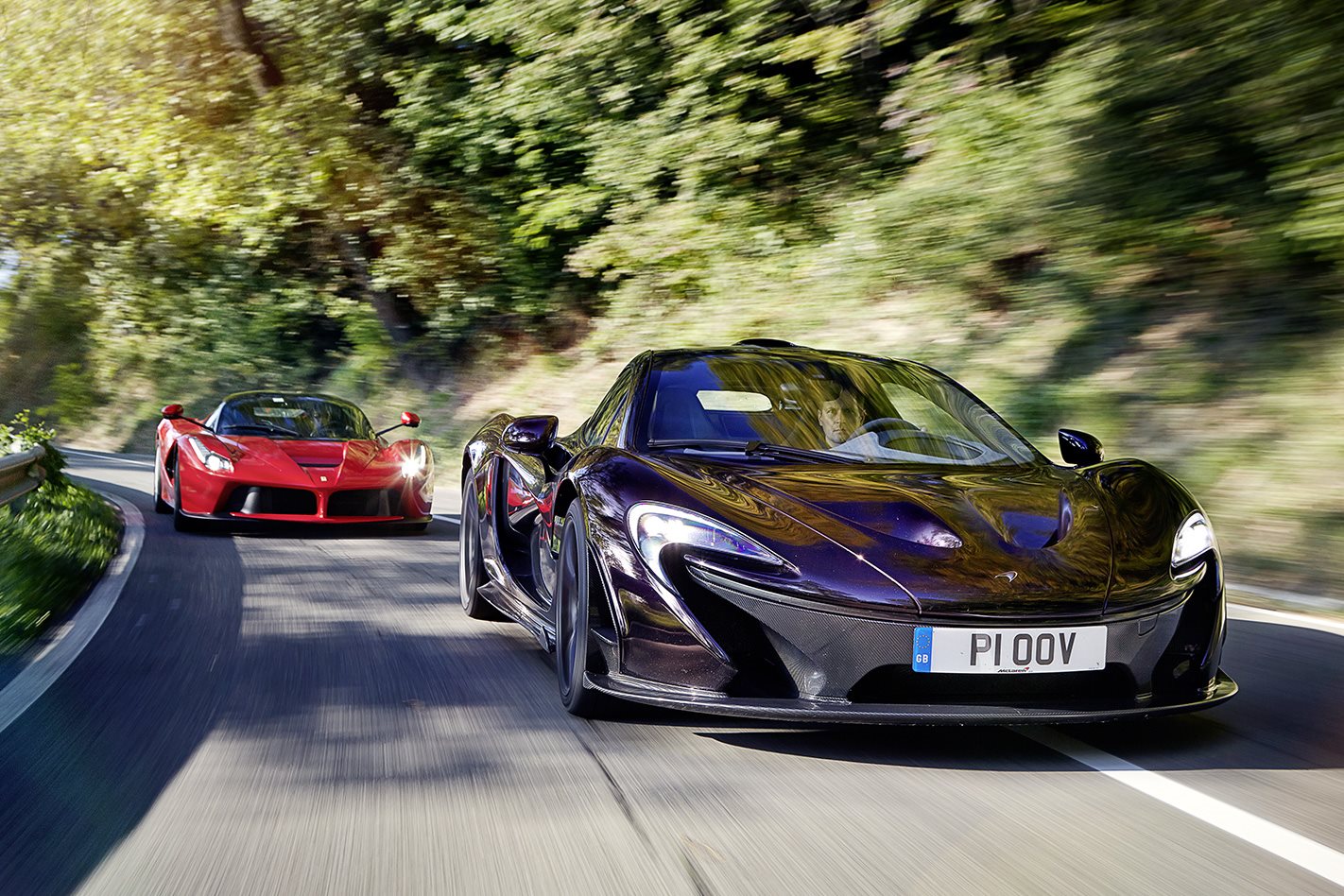At the pointiest end of the leading edge of supercar technology lie La Ferrari and McLaren’s P1. Sparks are sure to fly as these two hybrid hypercars finally collide.
First published in the March 2015 issue of Wheels magazine, Australia’s most experienced and most trusted car magazine since 1953.
THIS pair cost a couple of million each, give or take the odd 911 Turbo, and even if you can afford one, you can’t have it. They’re all sold, all 499 La Ferraris and 375 McLaren P1s, to a wealthy few who have collectively spent $1.5 billion in the pursuit of automotive nirvana. But, hypothetically speaking, suppose a vacant slot appeared on the list for each, and watching TV tonight you noticed the cushion felt a bit uncomfortable, lifted it up and discovered a year’s worth of Vegas slot jackpots in change down the back of the sofa. Which would you have? Which is best? La Ferrari, or the P1? We brought a P1 over the Alps and to Ferrari’s home town of Maranello to find out. Welcome to the lion’s den, McLaren.
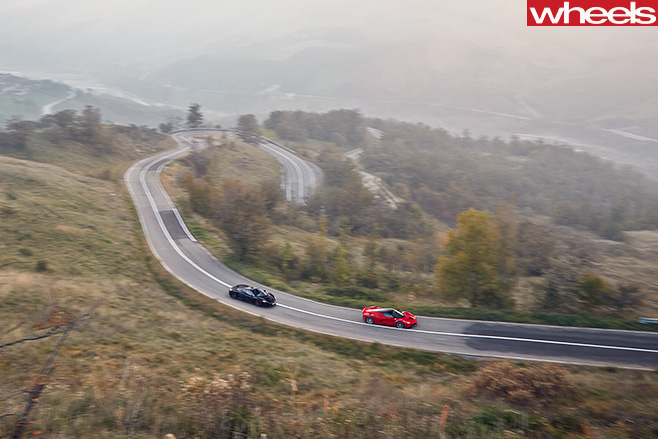
We’re heading for the roads south of Maranello, where the topography gets interesting and Ferrari’s own test drivers come to play. By the day’s end we’ll have seen three different prototypes for next year’s turbocharged 458, and been disappointed with the muted sound of every one.
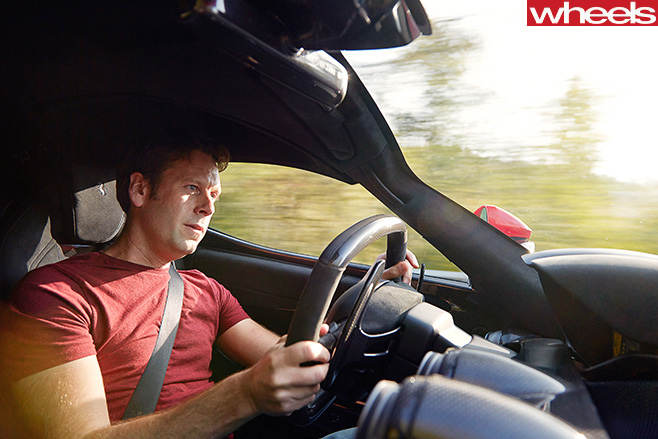
The route south is traffic-free and as we track the ribbon of dry rocks that currently make up the Panaro river, scouting for locations while we wait for Ben, I realise how relaxed I’ve become in the P1 now that I’ve got several hundred McLaren kays under my belt. Blisteringly fast, surprisingly compliant and so communicative, it’s as easy to drive as a 650S, but far more able. Not that money is even a factor at this level, but La Ferrari, at a whopping $200,000 more than even the $1.62 million P1, is going to need to be something special to top this.

Immediately, it’s obvious how strikingly different the two cars are in design. And size. The Ferrari looks enormous: 114mm longer than the P1 and 46mm wider, but resting on a wheelbase shorter by 20mm that results in the nose hanging beyond the front axle as if design boss Flavio Manzoni had handed it over to cartoonist Gerald Scarfe to draw the schnozzle. Whoever did draw that nose did a fine job, though, because the combination of those angular arrow-slit headlights, horizontal cooling slats and floating septum means it absolutely monsters the P1 when it comes to the rear-view-mirror scare factor. Circle round to the back end, though, and it’s the P1 doing the scaring.
Both bodies are heavily contoured to make the most of the air passing above, below and even through the car, the Ferrari’s outrageously scalloped flanks leaving the front wings almost adrift from the car’s thorax in a manner not seen on a Ferrari road car since the first one, the 125S, back in 1947.
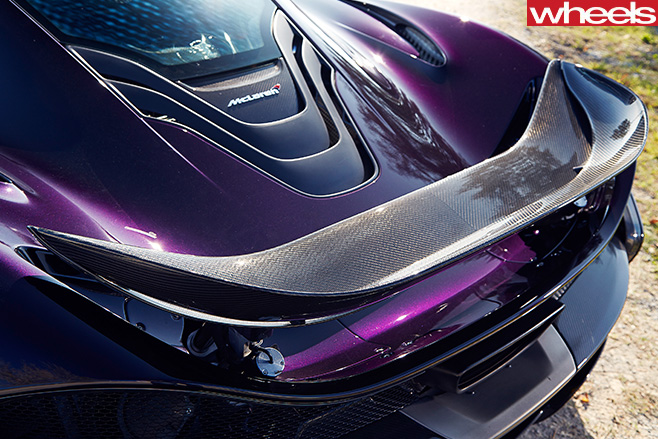
That soul is an evolution of the F12’s 6.3-litre naturally aspirated V12. With 588kW and a mental 9250rpm redline, that alone would be enough to make it one of the world’s quickest cars, and almost 112kW punchier than the Enzo it replaces. But here it’s augmented by 120kW of electric power.
The McLaren has even more electric power, at 131kW, is the only one with a plug-in charging option, and the only one to offer an EV mode. The P1’s combustion engine makes 46kW less power (542kW), but 20Nm more torque (720Nm). If you remember nothing else, the basics are this: the 1255kg Ferrari walks softly to the tune of 140kg, and taking both petrol and electric power into consideration, carries a 35kW bigger stick.
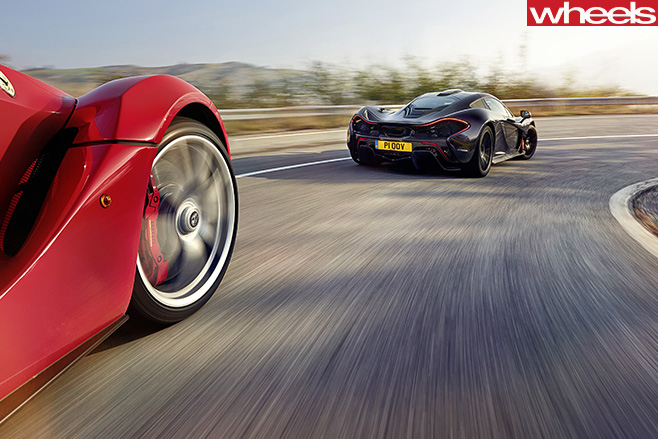
I’ve driven La Ferrari before, and on these roads in fact. But that was six months ago. How will it measure up after hundreds of miles in the McLaren? How different can two cars so closely matched in power, price and performance really feel?
I’ve barely opened the Ferrari’s door before those differences start appearing. You fold yourself awkwardly into the P1, but step casually into the Ferrari, its slim, low-cut sill and door aperture that bites deep into the roof making it a cinch to get in and out. Tug the door downwards (they’re surprisingly heavy in both cars) and the McLaren feels similar to the 650S on which it’s distantly based. The steering wheel and rising centre stack are instantly familiar, even if some of the details and the deliciously comfortable lightweight carbon-back seats aren’t.

When even Fiestas come with keyless start, it seems absurd that a car so futuristic and expensive as this still requires you to twist a key to prime the ignition. Only then can you go to the steering wheel’s lower-left quadrant for the bright red button that will fire the starter motor.
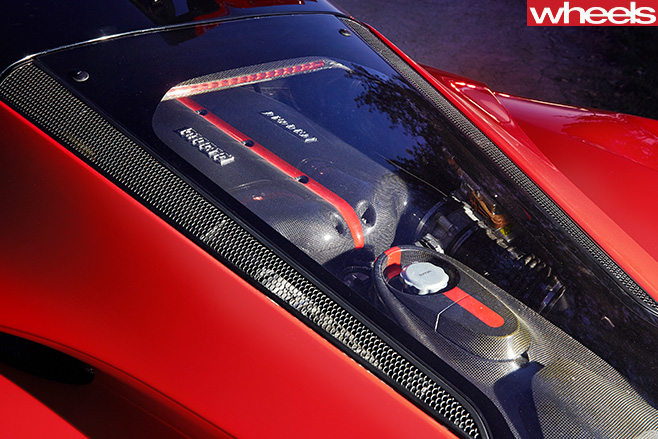
Both of these cars are supposed to use electric power to make up a torque shortfall at low revs, but flatten the pedal in the McLaren in a higher gear and you can go and make a cuppa before the action starts. Try the same in the Ferrari and it picks you up harder and faster than any caffeine hit ever could. No wonder the rear tyres are a colossal 345mm wide.
The peaks of the front wings help you place the nose, but it’s with some trepidation at first. The forward visibility isn’t as good as the P1’s, the steering even sharper than in the frenetic 458 Speciale. The McLaren you settle right into; La Ferrari feels more alien, and takes longer to trust. But trust you must if you’re to do more than scratch the surface of its talents.

Fortunately, some familiar Ferrari traits help calm the nerves. The steering-wheel manettino selector, for instance, is more intuitive than the McLaren’s twin console-mounted rotary dials, and easier to wrestle with in the heat of the moment. And the ride is dumb-strikingly good. Thumb the damper button on the steering wheel, and both comfort and traction benefit as a result. I’m not sure about the brakes, though. The power is there, but they feel grabby at first, and the energy regeneration system makes them hard to modulate when just tipping in.
Already it’s clear that these two cars, aligned so closely in terms of power, price and purpose, feel wildly different from behind the wheel. That much we do know. But which is fastest? Both reach 100km/h from rest in less than three seconds and are limited to 350km/h, though we’re too far from the autostrada to see which one gets there, or somewhere near it, first. But our video guy wants some chase footage looking back from one car to the other. Wants us to drive from the bottom of a hill to the top, as fast as we can. It’s risky; plain stupid, in fact. We’re on a public road, a road too small for cars this quick, if we’re honest. If the lead car spins, we’ll be driving too close for the one behind to avoid it. The strong carbon passenger cells mean we’d likely survive unscathed, but probably wish we hadn’t.
Gulp, here goes.
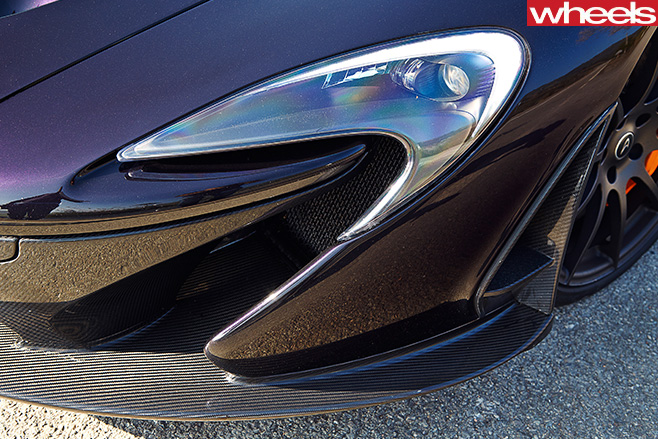
A nudge at the wheel and the P1 flicks into the left-hander. There’s a surprising amount of kickback, more than in the quicker-steering Ferrari, but it’s even more responsive in that first nano-degree of twist from centre and the feel is exquisite. You couldn’t know more about the road’s surface if you’d donned a high-vis and raked the tar out and rolled it flat yourself. But there’s definitely more understeer to deal with, and sticking with second gear on the slower, tighter bits, you’re too far below the power band to neutralise it.
A glance in the mirror shows Ben’s grappling with the opposite problem. The Ferrari’s front end bites hard, but even with rear tyres a full 30mm wider than the P1’s, the big hit of low-down torque that arrives when he opens the taps slews the tail wide as we exit a tight left-hander on to the longest straight.
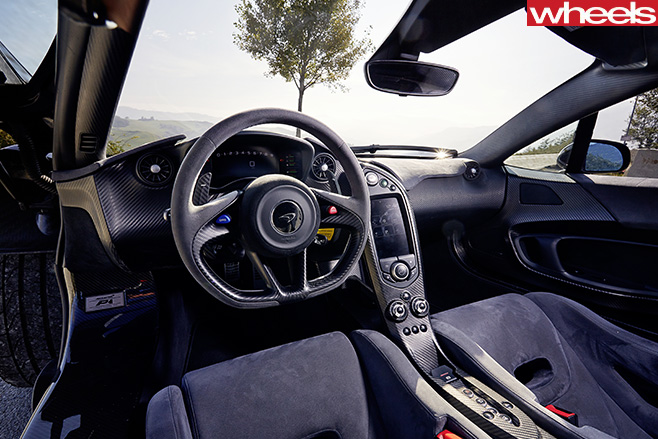
Finally we get the chance to keep those right pedals pinned, two of the fastest four-wheelers on the planet, piling on 30km/h increments, a second at a time: 60, 90, 120, 150, 180… Neck-and-neck every step up the ladder, then back down again on the brakes. I can’t know how Ben feels, but the P1 feels like it could do this all day. Fortunately for my sanity and the safety of the people of Santa Poco, we don’t, and I ease off the gas, simultaneously gutted and relieved that it’s over.
I glance across to the passenger seat. The video guy, who only met me for the first time last night, looks terrified, and I don’t feel much better myself. I’m shaking like a road-mender’s drill, as giddy with adrenaline as with the guilt of having driven far, far too fast.
I’m not going to pretend that a five-minute fight on a hill route that never let either car really stretch its legs beyond fourth gear or make use of its aero devices is in any way definitive proof that one is faster than the other around somewhere like the Nurburgring. But on these roads, with two reasonably handy and identically speedy drivers behind the wheel, they’re all but inseparable.
We spend the rest of the day criss-crossing our way through the spectacular late autumn scenery, picking off Fiats, picking up leaves with fat tyres and throwing them skywards, and trying to pick holes in either car. It’s not easy, if you accept that a car can actually be worth two million dollars, when a sublime 458 Speciale is one-fifth the price. But mostly we just try to pack in as much exposure to these amazing cars as we can.
The elation of the last couple of days is tempered slightly by the knowledge that this could well be our last proper encounter with either car, and even if we ever find our way behind the wheels in years to come, probably with an owner’s or dealer’s car, we’re unlikely to have a free pass to paste them so mercilessly.
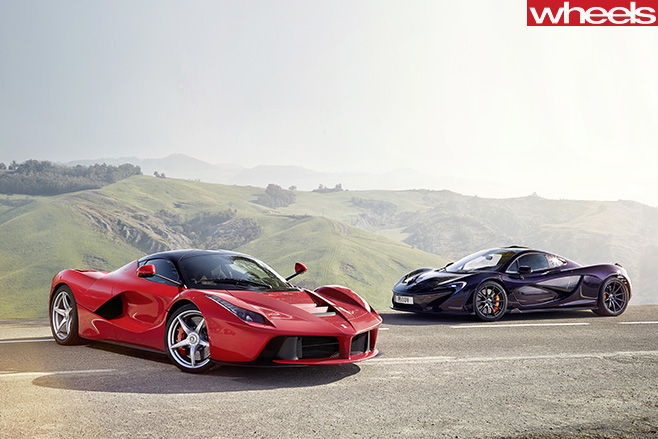
I could put a P1 in the garage just to stare at that outrageous rear styling, never mind to feel the savage kick of the V8 on full boost, that incredible steering, or the way you just click with the car from the moment you get behind the wheel. But there’s no getting away from the fact that the Ferrari’s drivetrain is the more impressive: faster revving, smoother, more soulful and so much lustier.
The Ferrari feels more of an event because that’s what it is. A ground up, clean-sheet car with the most outrageous front-end response this side of a pitwall. At this level, the McLaren’s reassuring similarity to the 650S is partly its undoing because, whatever any eventual track test or Nurburgring lap times might prove, I suspect the Maranello car will always feel more special. Staggering, wonderful achievement as the McLaren P1 is, on these roads, and for these drivers, the epoch-defining La Ferrari wins.
Ferrari La Ferrari Price: €1.2m ($A1.76m) Engine: 6262cc V12 (65°), dohc, 48v; Max power: 708kW @ 9000rpm Max Torque: 900Nm @ 6750rpm Transmission: 7-speed dual-clutch Weight: 1345kg Acceleration: 0-100km/h: sub-3.0sec (claimed) Plus: It’s bloody marvellous Minus: It’s bloody expensive Verdict: 10/10
McLaren P1 Price: £866,000 ($A1.55m) Engine: 3799cc V8 (90°), dohc, 32v, twin-turbo; one electric motor Max power: 673kW @ 7500rpm Max torque: 901Nm @ 4000rpm Transmission: 7-speed dual-clutch Weight: 1450kg Acceleration: 0-100km/h: 2.8sec (claimed) Plus: The world’s most exciting road car Minus: Too complex for its own good? Verdict: 9.5/10

